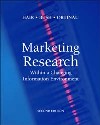Corona beer, produced by a Mexican-based company, is available in 124 countries around the world. Up to 1997, Corona had always been sold in 170 countries around the world. Corona passed Heineken in total volume shipments in late 1997. In fact, over the past three years Corona has been averaging a 35 percent increase in sales, while Heineken has been able to maintain only a 7 percent increase in the same period. Why the sudden craze for Corona? Many experts in the field contend that it is more likely due to problems related to Heineken than to the success of Corona. Heineken has been the number one imported beef for two decades and thus the company may have forgotten how to compete. In a past news release, one of Heineken's managers was reported to have stated, "We are number one, we always have been number one, and we will always be number one. "Today, however, Heineken is no longer number one, and the company is attempting to stage a comeback against Corona.
Aside from its complacency, Heineken has been experiencing some setbacks associated with competition from other beer producers. Some of these issues are as follows:
1. An advertising campaign by Anheuser-Busch announcing the labeling of freshness dates on its beer brands and suggesting that Heineken is not a "fresh" product and is considering "skunky" by many beer drinkers.
2. An increased level of consumption of microbrews and specialty beers, offering a variety of brands for a variety of customer tastes. Heineken has a product mix of only two brands: the traditional brand and a dark amber variety.
3. Demographic changes in the traditional beer-drinking population. Beer drinkers are getting older and drinking less. The baby-boomer segment has declined in consumption of beer, while the Generation X segment has become a larger beer market. Heineken has admitted that it has done a poor job in nurturing the Generation X segment as Heineken consumers.
4. Retailers' discomfort over Heineken's distributors' pricing. The overall price of Heineken charged to the point-of-sale retailer is approximately 15 percent higher than that of competing import beers. This, along with a strong point-of-sale promotion program by Corona, is prompting may retailers to reduce shelf space for the Heineken brand.
The strategic goal for Heineken is to recapture its number one position in the beer drinking market. In order to do so, Heineken must make some critical decisions in the near future.
1. Research the import beer industry from 1996 to the present and list several marketing decisions facing Heineken today.
2. Plan a research agenda that Heineken can use in order to successfully implement these decisions. Specifically, translate the decisions you have developed into specific research objectives for Heineken.
3. What ate the central research questions that Heineken needs to address? Also, what information needs are critical in order for Heineken to implement its marketing decisions?
|



 2003 McGraw-Hill Higher Education
2003 McGraw-Hill Higher Education